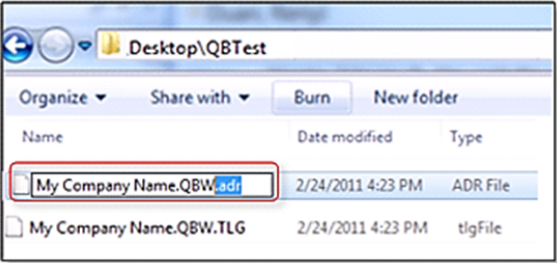QuickBooks Desktop has a characteristic known as Auto Data Recovery (ADR) that, in a case of statistics loss or corruption, may additionally enable you to recover all or almost all of your data. ADR used to be brought in QuickBooks 2012 (and later) and QuickBooks Enterprise Solutions 13 R4 (and later).
Intuit® Data Services can assist with information recovery most of the time. However, the procedure can take some time and can also imply that you can’t use QuickBooks for numerous days. Utilizing the ADR can be a faster way of getting better lost or corrupted data. Be reminded though that it should only be used after all suitable troubleshooting has been tried.
ADR can assist you get better your misplaced file by:
- restoring misplaced transactions the usage of your current Transaction Log file and a reproduction of your Company file.
- restoring all but the ultimate few hours of transactions with a copy of both your Company file and your Transaction Log file.
Before you proceed, a few reminders:
|
Recover recent transactions using the original .TLG file with .QBW.adr file
Utilize the authentic Transaction Log file and ADR version of the enterprise file to recover all recent transactions.
- Create a new folder on your Desktop named QBTest.
- Open the folder where the company file is saved.Tip: You can check the location of the company file on the Product Information screen (press F2 or Ctrl+1 on your keyboard) and No Company Open Window.
- Look for the .tlg file in your company file’s folder. It has the same name as your company file.Show file extensions
If you cannot identify the .tlg file, perform these to show file extensions.
- To open File Explorer press Windows+E on your keyboard.
- Click Organize, then choose Folder and search options.For Windows 10, 8.1 & 8: Choose View, then select File name extension.
- Select Hide extensions for known file types.
- Select Apply, then OK.
- Copy the corresponding .tlg file of your company file, and paste it to the QBTest folder on your Desktop.

- Open the QuickBooksAutoDataRecovery folder. It is in the same location as your company file.
- Copy the .QBW.adr file and paste it to the QBTest folder. You should now have a .QBW.adr and .tlg file on your QBTest folder.

- In your QBTest folder, right-click the .QBW.adr file and select Rename.
- Delete .adr at the end of the file.

- Open QuickBooks.
- Open the company file that is saved on your QBTest folder. Use your account register to verify all transactions are there.
- Select File > Utilities > Verify Data to check the data integrity of the recovered file.
- If this copy of the company file is good, you can move the damaged company file to a different location and transfer the copy from QBTest to the original location.
Recover recent transactions using .QBW.adr and .TLG.adr files
This solution will utilize the ADR version of both the .QBW and .TLG files. This should recover all but the last 12 hours of transactions.
- Create a new folder on your Desktop named QBTest.
- Open the folder where the company file is saved look for the QuickBooksAutoDataRecovery folder.Tip: You can check the location of the company file on the Product Information screen (press F2 or Ctrl+1 on your keyboard) and No Company Open Window.
- Look for the .TLG.adr and .QBW.adr files. These files have the same name as your company file. Show file extensions
If you cannot identify the .TLG.adr and .QBW.adr files, perform these to show file extensions.
- To open File Explorer press Windows+E on your keyboard.
- Click Organize, then choose Folder and search options.For Windows 10, 8.1 & 8: Choose View, then select File name extension.
- Select Hide extensions for known file types.
- Click Apply, then OK.
- Copy the .TLG.adr and .QBW.adr files and paste them to the QBTest folder.
- On your QBTest folder, remove the .adr from the end of the file name. That should give you a .qbw and .tlg files on your QBTest folder.
- Open QuickBooks.
- Open the company file that is saved on your QBTest folder. Use your account register to verify all transactions are there.
- To check the data integrity of the recovered file: in the top left, select File > Utilities > Verify Data.
- If this copy of the company file is good, you can move the damaged company file to a different location and transfer the copy from QBTest to the original location.
Still Having a Question?
Call: +1-(818) 900-9884
Chat Live to the Customer Care Executive




